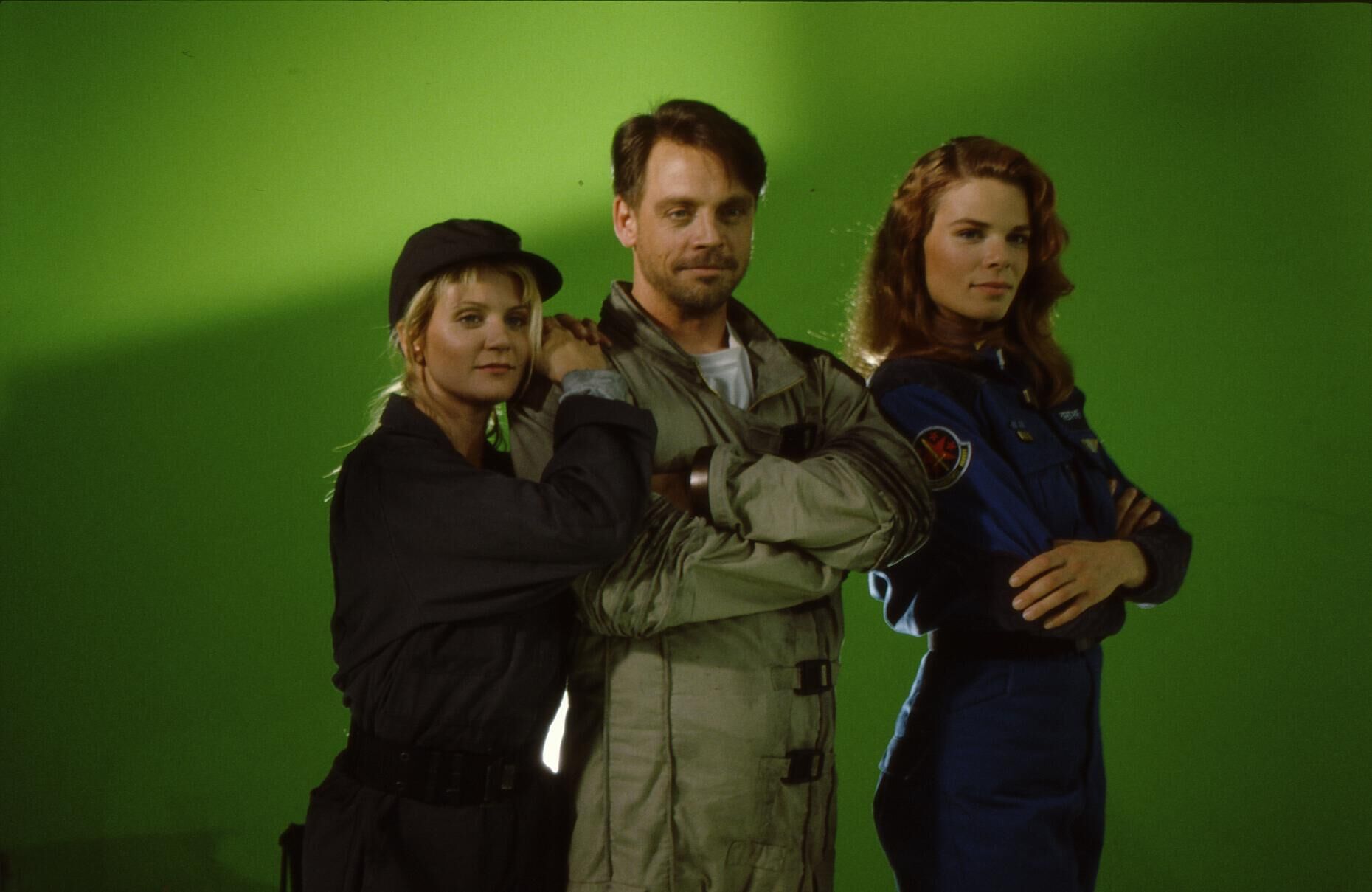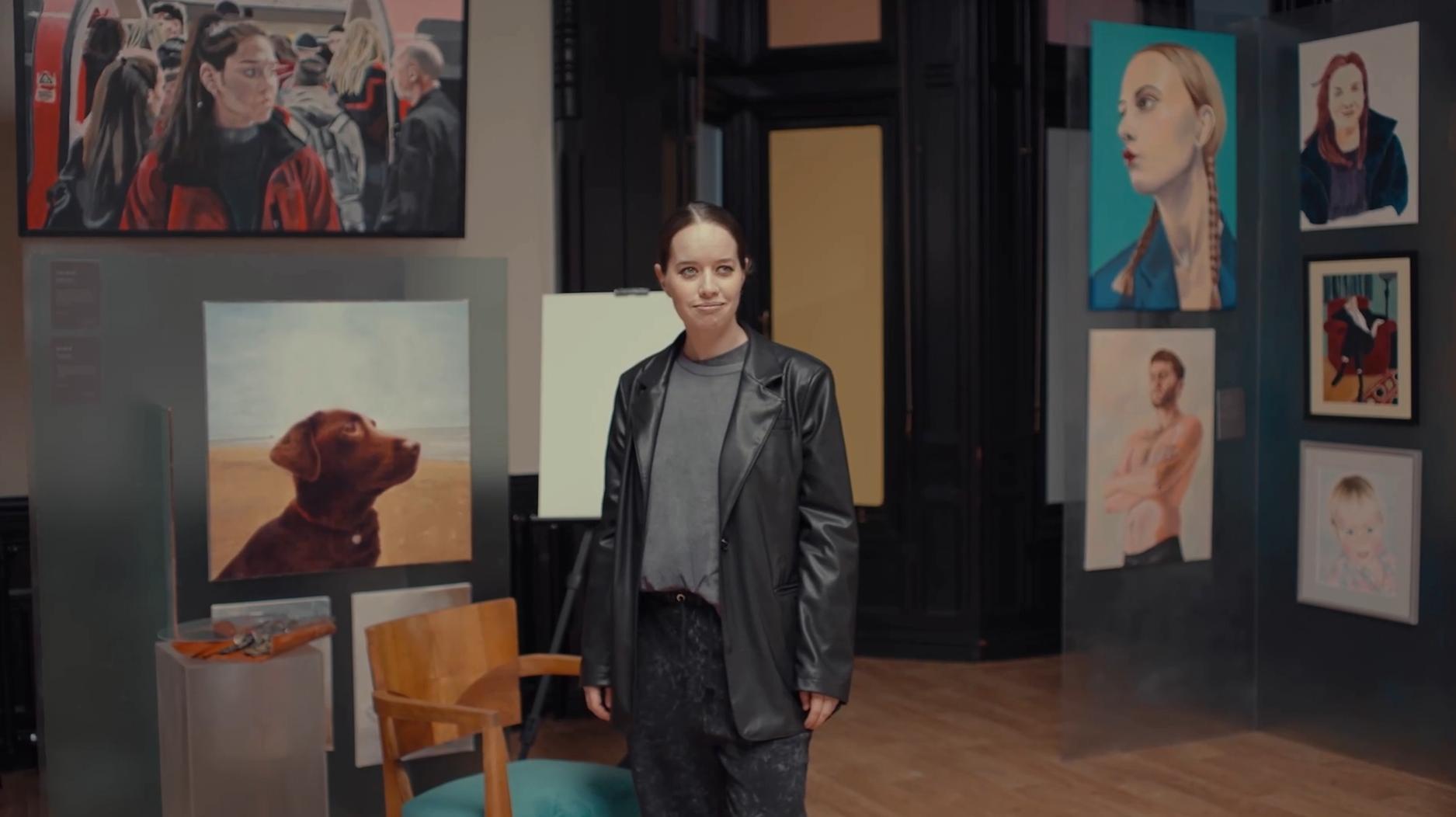The Gallery: Can FMV Games Make a Come-back?
The Gallery is a new FMV (Full Motion Video) game - a genre that we can also describe as interactive movies. It’s been a very long time since I played a FMV game. There were a lot of those back in the early 90s, as the CD-ROM was introduced on the market as a massive storage medium. For the kids out there who just came out of their mothers after 2000, in the early 90s most of the storage was limited to floppy disks (1.4 Megabyte per disk) and small hard drives (in the hundreds of Megabytes). Most games were designed to fit in those constraints, and with the sudden advent of the CD-ROM, having full motion video as part of a game become a reality. This was often used as an excuse to make “remasters” of games by slapping a couple of sloppy FMVs sequences on top of them. At that time everyone was easily impressed by full motion video in games: it was new, it was a technical feat (the hardware at the time was barely capable of decoding FMV decently), and it was relatively cheap to make and produce. There were quite a few games mostly centered around FMV themselves, interactive movies if you’d like. And then you had those that mixed actual games with a lot of FMV, such as Wing Commander 3 (featuring Mark Hamill from Star Wars fame) that had the biggest budget of any game ever made at that time, or Under the Killing Moon (a great adventure game with cutscenes and conversations mixing CGI and video) - to cite the best examples. Seeing Wing Commander 3 in 1994/1995 was like seeing the future. No game managed to make you feel like you were in actual movie until then.

Most of the other games were made with sub-par production values, bad actors, and felt more like B movies running on a computer than anything remotely serious. In the arcades you had games like Mad Dog McCree where you used your pistol to kill enemies and move to the next scene. Like Virtua Cop, but made with FMV.
But by far and large the genre disappeared after a few years, while there have been some recent attempts at resurecting it. Her Story from Sam Barlow was a great way to make the genre work in a compelling way. In this context, I was quite curious to see what The Gallery would bring back on the table in 2022. There’s also the recent The Centenial case Japanese game on PS4, PS5 and PC. So it might be the beginning of a new trend if they gain any kind of traction.
Since the whole point of a FMV-based game is the story, I won’t give you any spoilers. Let me just give you the background at least. You play the role of Morgan, who rents a gallery inside a castle in the UK.

You are struggling to make ends meet and you are now preparing for a new exhibition this weekend, showcasing portraits made by numerous painters… including a very special piece of resistance: a portrait of a famous personality, made by one of your very best friends who became famous for their work. That one is supposed to be delivered early in the morning, and you are anxiously preparing for the opening. The game takes place the night before the exhibition is to open.
Now there’s a twist. You can play the same story in 2 different ways: either in 1980 or in 2021. The story, place and dialogue remains fairly similar in both cases, but the main character is a woman in 1980 and a man in 2021 - both called Morgan. It’s worth doing as a second playthrough to check out how they managed to transfer the storyline in a different time.
 Morgan in 1980
Morgan in 1980
There’s a lot of small details that point to the context of the UK in both timelines: old fashioned hairstyles and references to the IRA in 1980, policewomen and masks for COVID19 in 2021… You also end up with a pair of different protagonists in both cases. I personally enjoyed the 1980 version a little more in terms of actors, but both were very well made.
 Morgan in 2021
Morgan in 2021
Since I can’t talk about the story in details, let me first say point out that the presentation is excellent. The director knows his stuff and the camera work, the photography are all very well done. We are so far away here from the amateurish work done in the 90s by a couple of drunks toying around with a camcorder. Everything is in high resolution too, with high quality cameras, which makes for a beautiful interactive movie to look at.

Now, the main actors are good. They don’t have an extremely challenging role to play, but they do their job well, and they remain kind of believable, when the script follows. The script is maybe one of the weak links here. It’s not fantastic, and once in a while some lines seem to come out of nowhere in the conversation. The Gallery’s plot is also fairly limited in scope, and you will get to one ending in less than one hour. You get there by making choices along the way, usually in a binary fashion. There is no other interactivity in the game. Every choice is timed so you are encouraged to make quick decisions (while the game also offers a mode where the timer is gone, giving you all the time in the world to make your choices).

The main point is to experience multiple endings and see how the whole thing could turn out if you make different choices. At the time of writing I went through 3 different endings, so I have not seen them all, but at least I can get an idea of what you could get.
Even if you were to forget about some of the silliness of the plot, there’s a few issues with how the game works. The first one is that most of the choices you are given are unfortunately micro-choices. They usually have no immediate impact on what will actually happen next: at best just a few lines of dialogue will change, but you end up in the same state anyway. You start in A, and based on your choice to go to scene A1 or A2, and anyway end up in B. That makes it easier for the developers and director, but that’s a lot less ambitious than I’d like to see in a game. The game could have at least provided some larger branching, a la Witcher 2, where the middle part of the game completely changed depending on one choice that you made around the beginning.

The main thing that changes is the relationship with other characters, going up or down based on a kind of progress bar displayed after your choices. Sometimes it’s fairly obvious on to get on good terms with them, some other times it’s not clear what answer will lead to what. During your first run, however, it’s not clear whether you will end up in a better place if you play along or not during encounters. There’s not much sense of where the whole thing is leading, which makes choices even more confusing.

Because of such lack of actual interactivity, there is very little point to replay the game since you go through the same kind of scenes and the same trail over and over, unless you really want to see how the endings change as a cumulative result of several choices that you made.
One other thing that needs improvement is… the need for more background. You jump right in the game and make choices out of the blue without knowing much about yourself or your surroundings in the first place. Building chracters, context, through a longer (non-interactive) introduction would have been desirable. You just discover that you have an ex-lover barging in as a surprise in the game, while it should not have been a surprise if you were properly playing that person’s role as it should be known to you. Maybe that’s what misses the most: a kind of voice-over that shares what your character is going through, as a commentary on what is happening to him/her?

While I don’t think there is much of a game here for the reasons I mentioned, the effort is laudable. The art, the production, the discussions around portraiture and the intemporality of painting in general are all spot on. A stronger, longer, more minutious script with more meaningful choices would go a long way to make this experiment really something that we don’t see anywhere else.
For now, this remains a curiosity, typically at a lower level of narrative power than that we see in (verbose but good) visual novels. But I can see the potential of having live actors and real places to make a story more believable, more tangible, more intimate.
Let’s see if the market has an appetite for more.
